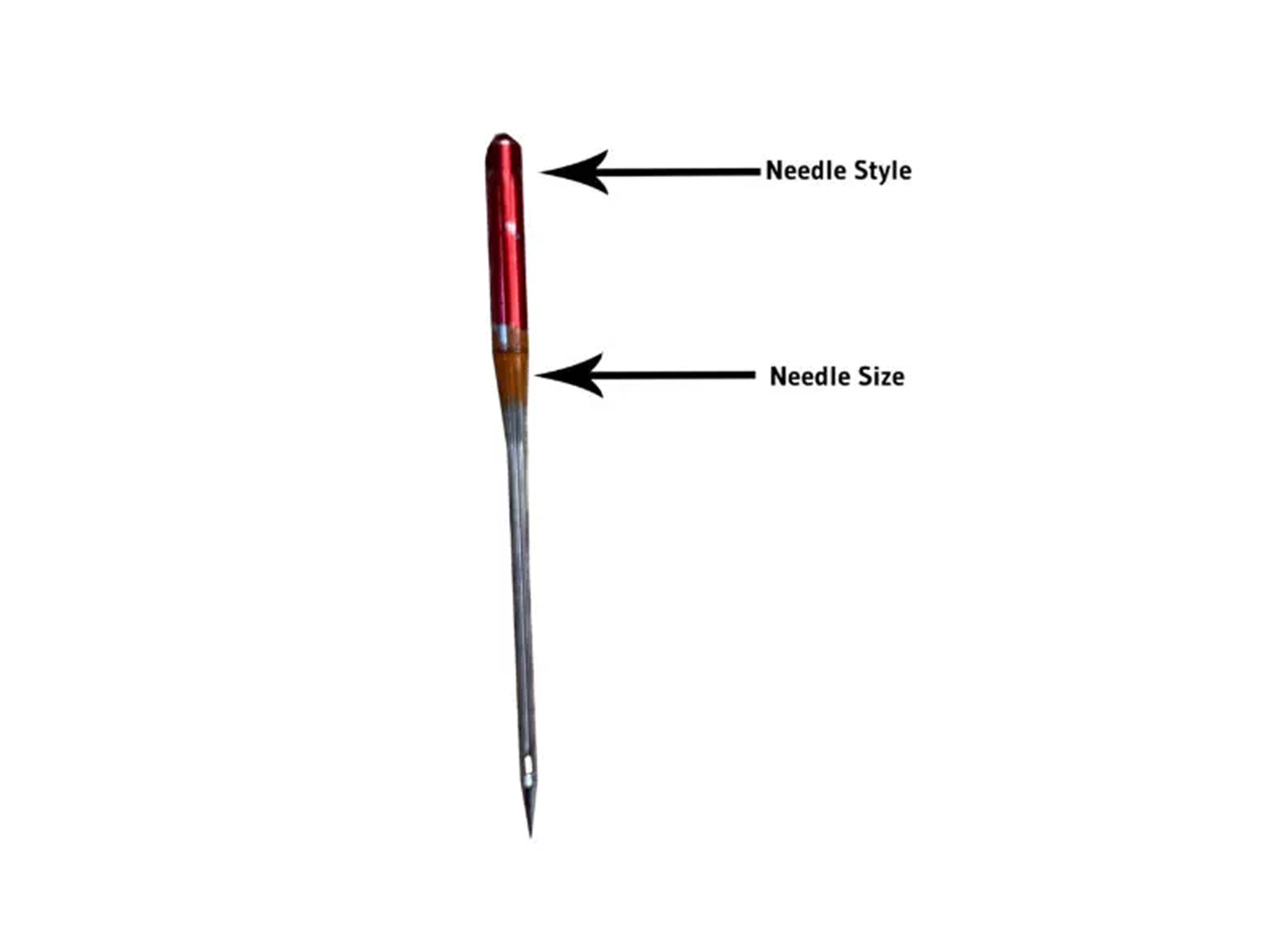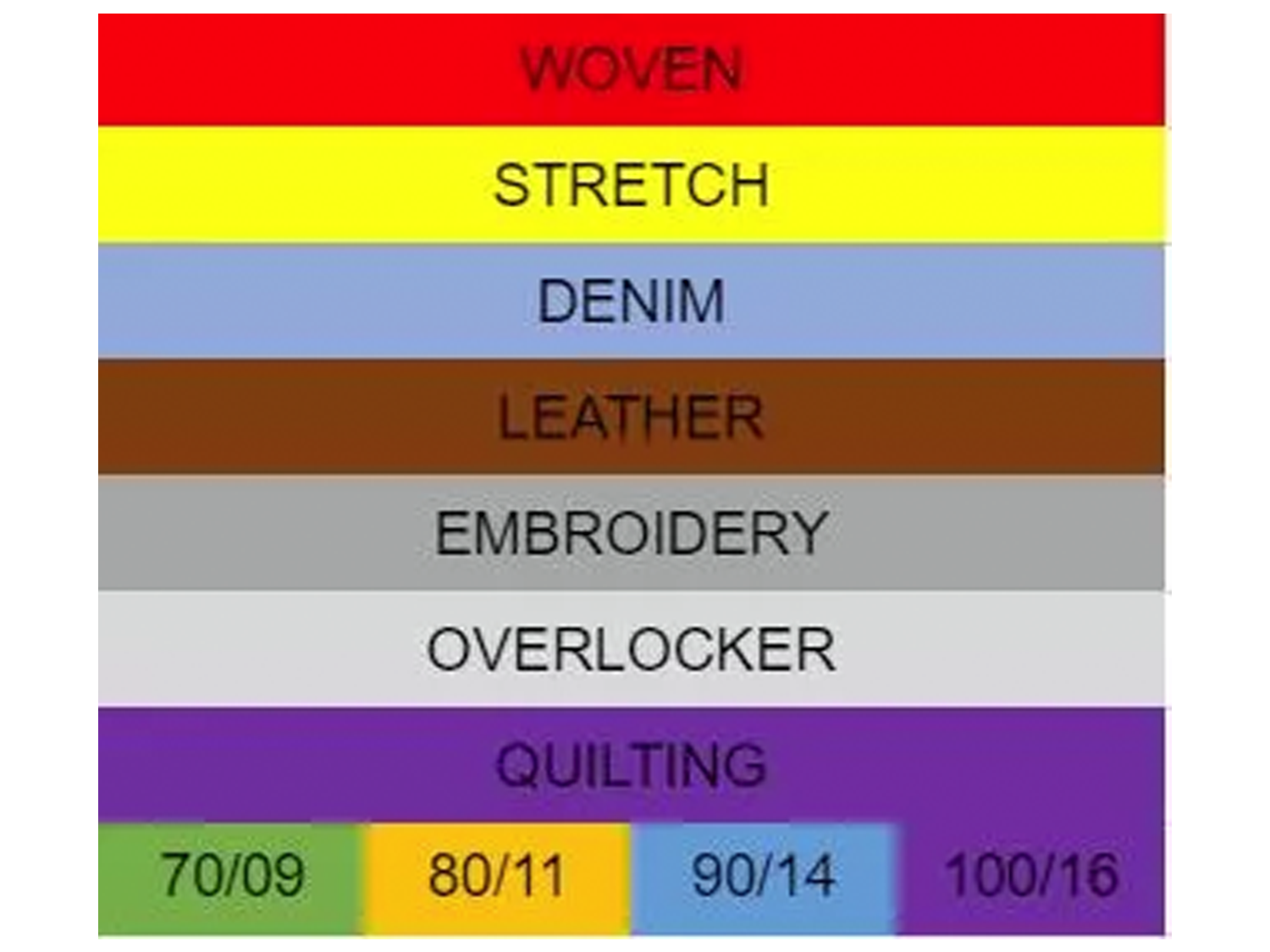
What does the colours on the needle mean?
You may have noticed the SINGER needles have different colours on the shanks. This is not just to decorate them. It is a code to help you know what type of needle it is.
Below we have the codes that, so you know which needle type correlates with what colour. Making choosing the correct needle for your next project.
Needle Style Colour:
- Red is for woven fabrics (2020)
- Yellow is for Knitted fabrics (2045)
- Blue is for Denim (2026)
- Brown is for Leather (2032)
- Dark Grey is for embroidery (2000)
- Light Grey is for overlocking (2022/2054)
- Purple is for quilting (2019)
Needle Size Colour:
- Green size 70 is for extra fine fabrics
- Orange size 80 is for light fabrics
- Blue size 90 is for medium fabrics
- Violet size 100 is for heavy fabrics

Types of Needles
Woven Needles:
A round sharp point needle is thinner and sharper than a universal needlepoint. It makes a perfect straight stitch for woven fabrics. Choose the right size needle for perfect results every time.
Stretch:
A ballpoint needle is used to prevent skipped stitches and fibre damage in knitted fabrics. It has a slightly more rounded tip than a sharp needle. The rounded tip slips between yarns rather than cutting them.
Overlocker:
A regular point style needle is used for this overlocker. This needle will penetrate the fabric threads of woven fabrics.
Embroidery:
A chromium needle is recommended for embroidery machines. These needles are designed to sew at high speed without heating.
Leather:
A reverse twist point needle has a cutting point which makes a small incision in the leather for the thread to pass. This cutting point makes a very clean hole in the fabric/ leather.
Hemstitch/ Wing:
Sharp with wide blades. Designed for decorative stitching on woven fabrics. This stitch will resemble Entredeux. Use natural tightly woven fibers like linen and cotton for best results.
Microtex:
Is recommended for sewing microfibre, silk and very fine delicate fabrics.
Twin:
Is 3mm wide and is used for pintucks & twin needle stitching.
Quilting:
A slim point needle which makes it easy to penetrate through multiple quilt layers
